Looking to stock your saltwater aquarium with a new angelfish? There are a few things you should think about before throwing any random angelfish into your tank, provided you have enough room and accommodating tank mates.
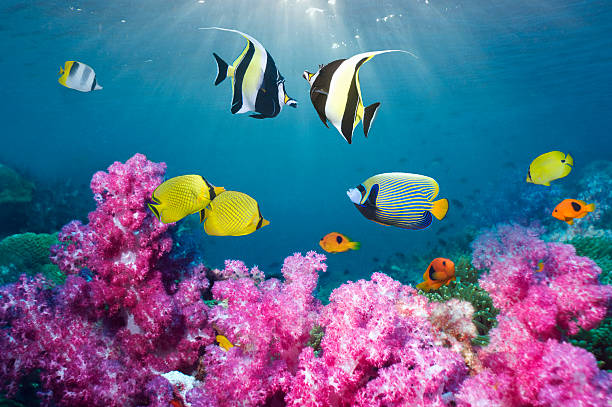
Angelfish are perciform fishes of the Pomacanthidae family. There are about 80 species of angelfish, each with its own set of qualities and needs. Do not make the mistake of assuming that all angelfish are the same. Make sure you conduct your research thoroughly to ensure you choose the right species for your tank. Some species may appear extremely similar in juvenile stages, so make sure you accurately identify your species before bringing any fish home. Many angelfish species are collected in the wild, depleting natural resources. Purchase from a sustainable dealer wherever feasible, and always check your species against the CITES list to ensure that endangered species are not imported illegally.
Angelfish Characteristics to Think About
Adult Size
When it comes to choosing the right angelfish for your saltwater tank, the mature size of the fish should be your first consideration. Some tiny angelfish species can only reach 5 inches (12.5 cm), while others can reach 24 inches (60 cm). Obviously, the larger the angelfish, the more space and resources it will need to thrive. Remember that all fish begin small, so don’t expect that lovely little angelfish you see in the pet store to continue that size. Research any possible additions thoroughly to guarantee they will be happy and healthy in your tank.
Temperament
Generally, the larger the angelfish, the more aggressive it is, although there are a few species, and even a few individuals within a species, that do not match that description. Because many aggressive fish species are territorial, they will demand significantly more room and tank mates who can hold their own. Any fish in an overcrowded environment may become violent if there is insufficient space or food. Ramming, swimming straight at other fish so they swim away, and knocking others out of the way when feeding are all signs of hostility in fish.
Foraging for Corals and Diet
Although most captive angelfish are pleased on a commercial pellet, some angelfish may begin nibbling on your saltwater corals. These are often smaller, dwarf species, however this is not always the case. If you have live rock instead of corals, your angelfish may pick on it from time to time. This poses no danger to the live rock or the angelfish. Here are several angelfish species that thrive well with coral, but don’t expect them all to follow the rules.
Level of Care
As with many saltwater fish species, the degree of care required will vary based on the variety of angelfish you keep. Because of their tighter water quality tolerances and particular diets, marine fishes are more challenging to care for than freshwater ones. Harder angelfish species, such as the Flame Angelfish, demand considerable care but are one of the less difficult angelfish species to care for. Angelfish that require expert care include the Regal Angelfish and Emperor Angelfish, both enormous species with big personalities.
Angelfish Species to Think About
Species of Dwarf/Small Angelfish
Flame Angelfish
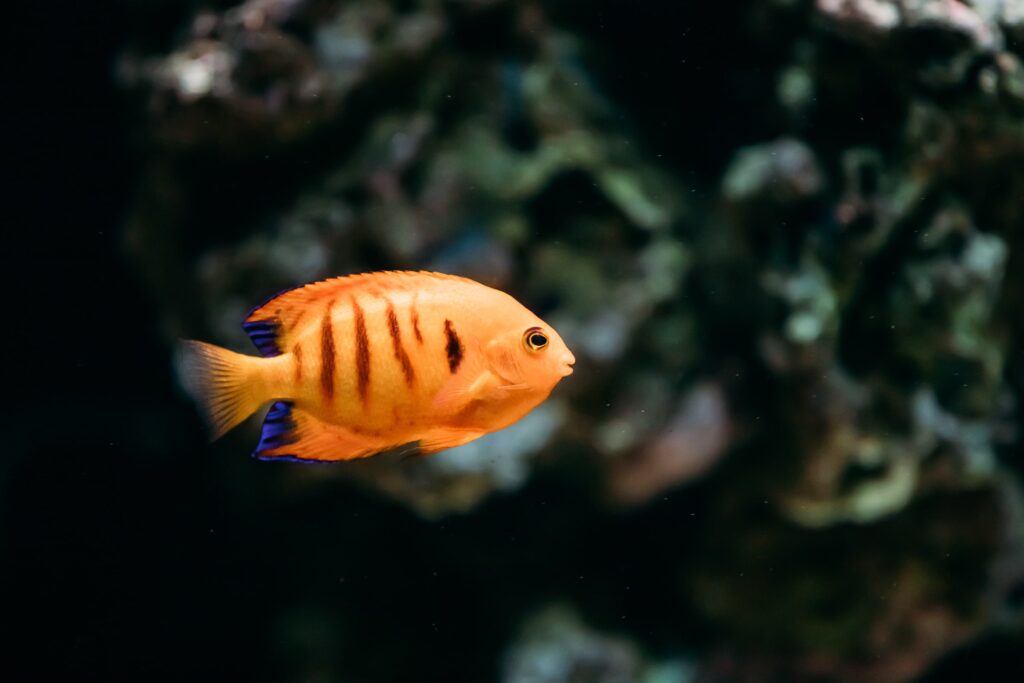
Because of its smaller size, more outgoing demeanor, and vibrant colour pattern, the Flame Angelfish (Centropyge loriculus) is one of the most popular angelfish. Because they are renowned for coral nipping, they are best suited for fish-only marine aquariums.
Lemonpeel Angelfish

The Lemonpeel Angelfish (Centropyge flavissimus) is called from its bright yellow appearance with unique blue accents around its eyes, gill covers, and fin tips. This species prefers alone and requires plenty of space. Despite its tiny size, it is a more aggressive saltwater fish species.
Angelfish of Medium Size
Black and White Bandit Angelfish
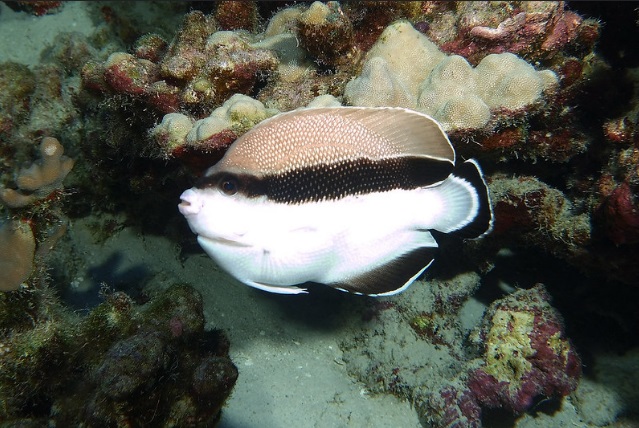
The distinctive black and white appearance of the Black and White Bandit Angelfish stands out among the multicoloured angelfish species (Holacanthus arcuatus). These fish are more uncommon in the aquarium hobby and demand a LOT of swimming space. These fish are often found on deeper coral reefs, so pay close attention to where you purchase fish and ensuring they are collected in a sustainable manner.
Swallowtail Angelfish
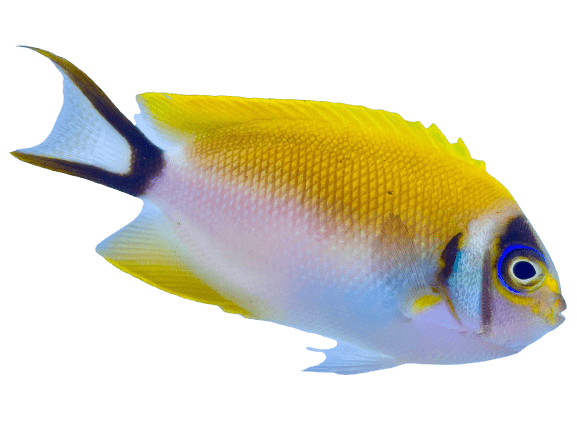
The Swallowtail Angelfish (Genicanthus melanospilos) gets its name from the swallowtail bird’s tail, which resembles the lyretail form of other angelfish in this genus. These angelfish are relatively calm and safe among reefs.
Angelfish of Large Size
Royal Angelfish
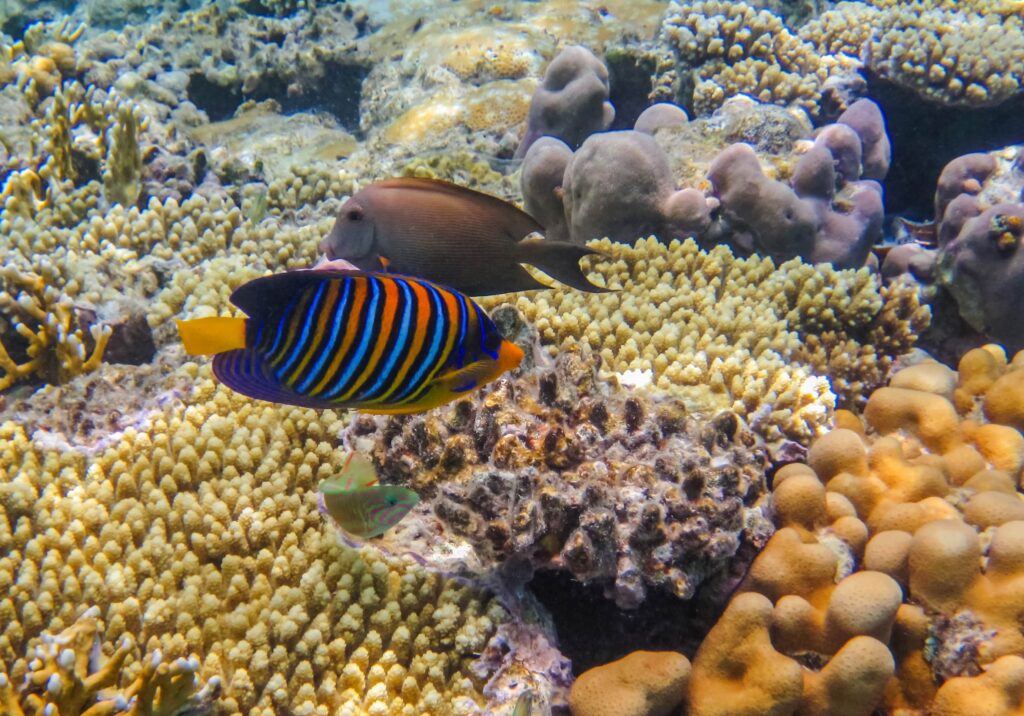
A definite “no” for beginners and those with small tanks, the Royal Angelfish (Pygoplites diacanthus) is a brightly colored, less aggressive angelfish species that can grow up to 10 inches long. These fish are very picky about their diet, like to have lots of space of their own and are known for rarely snacking on corals.
Emperor angelfish
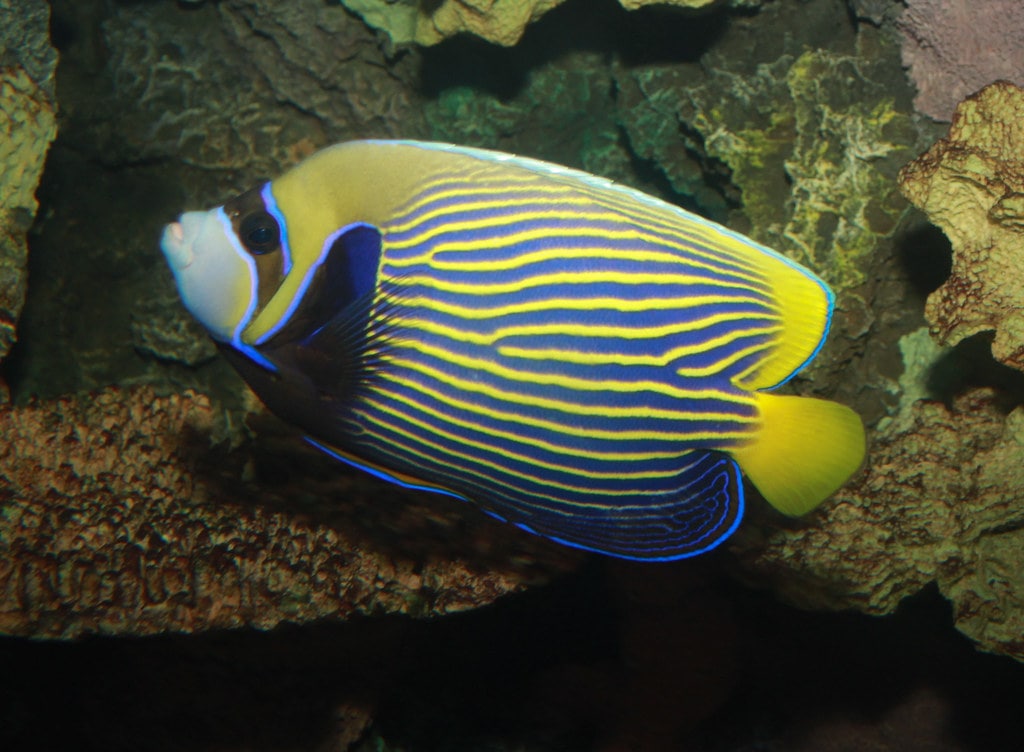
The Emperor Angelfish (Pomacanthus imperator) is one of the most distinctive angelfish in the saltwater aquarium hobby, with a brilliant colour pattern of contrasting yellow and blue stripes. The Emperor Angelfish, which may grow to reach a foot long, requires a lot of room and is not suitable for beginners or marine tanks with corals.
Angelfish Care: Best Practices
After you’ve determined the best angelfish species for your aquarium, carefully consider how you’ll integrate your new fish into your existing tank. After completing quarantine, aggressive species should be put last to the aquarium to allow more docile fish to find a home. When you add new fish to your tank, you may see some hostility. It may take some time for new fish to become acquainted with one another. Some captive-bred fish may have never seen another species, so allow them plenty of room and time to adjust to their new surroundings.
Choosing the correct food for saltwater fishes might be tricky when it comes to feeding. Because virtually all angelfish are omnivores, a variety diet of pellets, frozen meaty treats, and fresh vegetables is typically the best choice. Because angelfish can be more aggressive than other marine species, make sure everyone in the tank has equal access to all resources.
Marine fish are highly demanding about clean water, so keep up with your monthly maintenance regimen. Check your water chemistry on a regular basis and make sure all of your filtration components are operating properly. This will keep your angelfish, as well as the other residents of your aquarium, healthy.